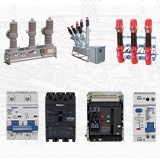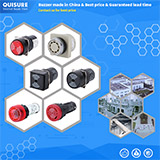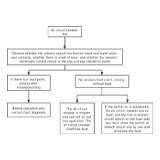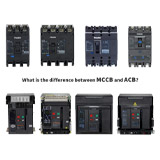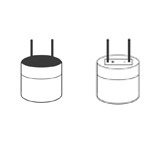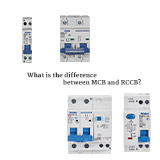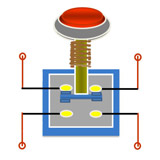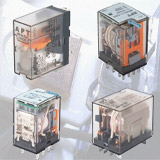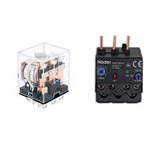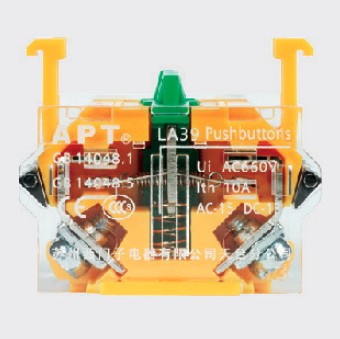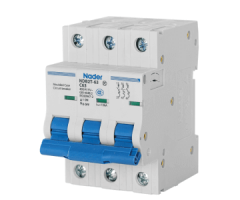Residual current circuit breaker(RCCB) is a switch that can act automatically when the leakage current in the circuit exceeds a predetermined value. The common residual current circuit breakers are divided into voltage type and current type, while current type is divided into electromagnetic type and electronic type. Residual current circuit breakers are used to prevent personal electrical shock and should be selected according to the different requirements of direct and indirect contact protection.
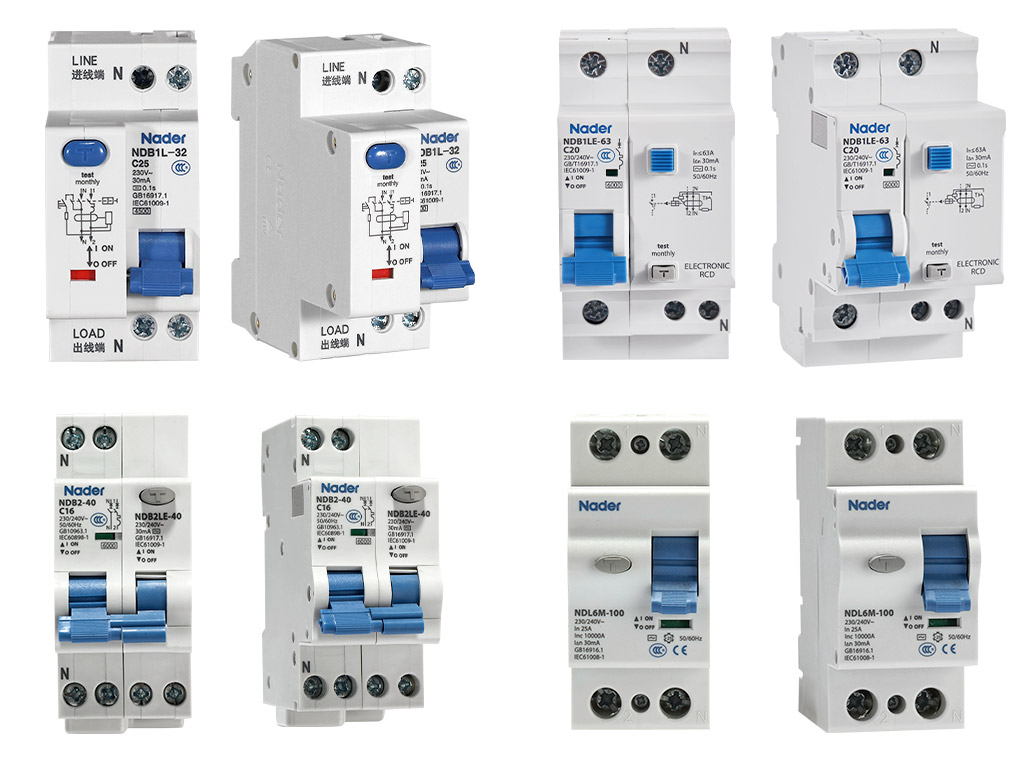
Nader Residual Current Circuit Breakers(RCCBs)
Voltage-type residual current circuit breakers are used in low-voltage power grids where the neutral point of the transformer is not grounded. When a person gets an electric shock, a relatively high voltage appears between the neutral wire and the ground, which causes relay action, and power switch tripping. Current residual current circuit breaker is mainly used in low-voltage distribution system where transformer neutral point is grounded. When a person gets an electric shock, a leakage current is detected by zero-sequence current transformer, which causes the relay to act and the power switch to disconnect.
Why Residual Current Circuit Breakers are Needed
If the current passing through the human body is only 20-30mA, it generally cannot directly cause ventricular fibrillation or the heart stops beating. But if it takes a long time, it can still cause the heart to stop beating.
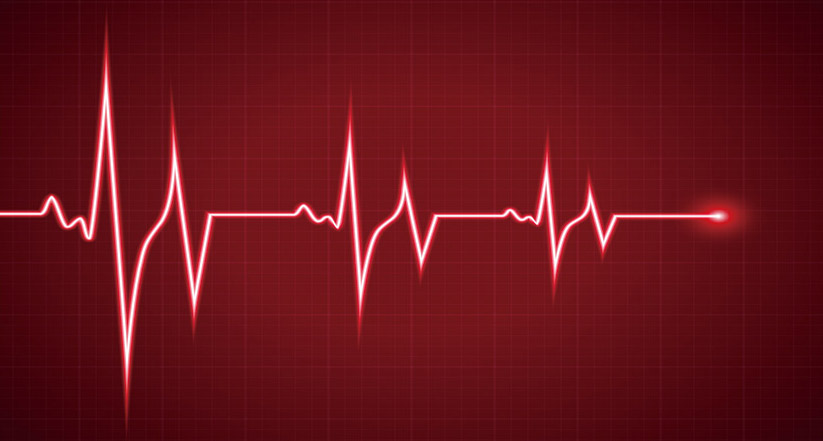
Residual current circuit breakers are used as protective devices against personal shocks and electrical fires in the event of short circuit to ground due to damaged circuit or electrical insulation. They are generally installed on the outlet circuit of each household distribution box and on the power supply line of the general distribution box in the whole building. The latter is specially designed for preventing electrical fires.
Working Principle of Residual Current Circuit Breaker
Residual current circuit breaker is mainly composed of three parts: detection element, intermediate amplification link and operation actuator. The detection element consists of zero-sequence transformer to detect leakage current and send out signal. The intermediate amplification link amplifies the weak leakage signal, and the amplification component can be mechanical or electronic. When the operation actuator receives the signal, the main switch switches from the closed position to the disconnected position to cut off the power supply.
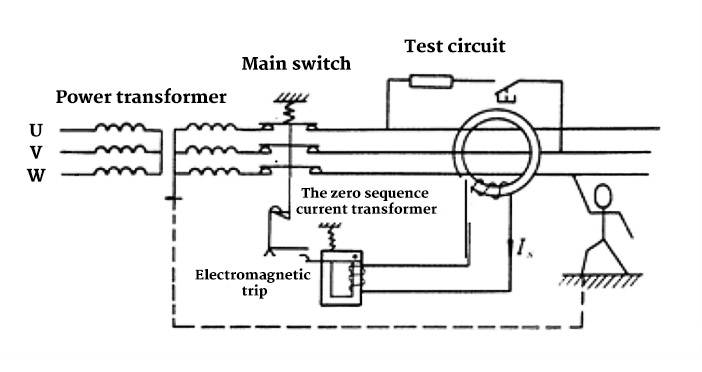
When electrical equipment leaks, there are two abnormal phenomena: the balance of three-phase current is damaged and zero-sequence current appears; normally, a non-charged metal enclosure has ground voltage (normally, the metal enclosure has zero potential with the earth). The main component of residual current circuit breaker is magnetic ring inductor. The fire wire and neutral wire are wound several times on the magnetic ring by parallel winding method, and there is a secondary coil on the magnetic ring. When the same phase fire wire and neutral wire are working properly, the magnetic flux produced by the current cancels out and no voltage is induced in the secondary coil. If a wire leaks or is not connected to the neutral wire, the currents of the live and neutral wires passing through the magnetic ring will be unbalanced, resulting in a magnetic flux passing through the magnetic ring, and a voltage is induced in the secondary coil through the electromagnetic The iron tripped the release action.

Selection Principle of Residual Current Circuit Breaker
1. Choose according to purpose of use and location of electrical equipment
(1) Protection against direct contact electric shock
Because direct contact with electric shock is harmful and has serious consequences, residual current circuit breakers with high sensitivity should be selected. For electric tools, mobile electrical equipment and temporary lines, residual current circuit breakers with action current of 30 mA and action time of 0.1s should be installed in the circuit.
If an electric shock is likely to cause secondary hurt (such as high-altitude operations), a residual current circuit breaker with an operating current of 15mA should be installed in the circuit. For electrical medical equipment in hospitals, a residual current circuit breaker with an operating current of 6mA should be installed.
(2) Indirect contact electrocution protection
Indirect contact electric shock in different places can cause different degrees of personal injury. Therefore, different residual current circuit breakers should be installed in different places. Residual current circuit breakers with high sensitivity are required in places with high hazards of easy electric shock. Electrical shock in wet places is much more dangerous than in dry places. Generally, residual current circuit breakers with action current of 15-30mA and action time of 0.1s should be installed. For electrical equipment in water, residual current circuit breaker with action current of 6-10mA and action time of US stage should be installed. For electrical equipment which the operator must stand on metal objects or in metal containers, as long as the voltage is higher than 24V, residual current circuit breakers with action current below 15mA and action time at US level should be installed. For fixed electrical equipment with 220V or 380V voltage, when the grounding resistance of the enclosure is below 500fZ, a residual current circuit breaker with action current of 30mA and action time of 0.19s can be installed on a single machine. For large electrical equipment with rated current above 100A or power supply circuit with several electrical equipment, residual current circuit breaker with action current of 50-100mA can be installed. For grounding resistance of electrical equipment below 1000fZ, residual current circuit breaker with action current of 200-500mA can be installed.
2. Choose based on the normal leakage current of the circuit and equipment
(1) The action current of the residual current circuit breaker used by a single machine should be 4 times higher than that of the leakage current under normal operation of the equipment.
(2) For the residual current circuit breaker used in branch line, the action current should be 2.5 times higher than the leakage current of the normal operation of the circuit, and 4 times higher than the leakage current of the electrical equipment with the largest leakage current in the circuit.
(3) The action current of residual current circuit breaker for main line or general protection of the whole network should be 2.5 times higher than that of leakage current under normal operation of power grid.
Precautions for Using Residual Current Circuit Breakers
Install
1. Check the data on the nameplate of the residual current circuit breaker for conformity with the requirements before installation.
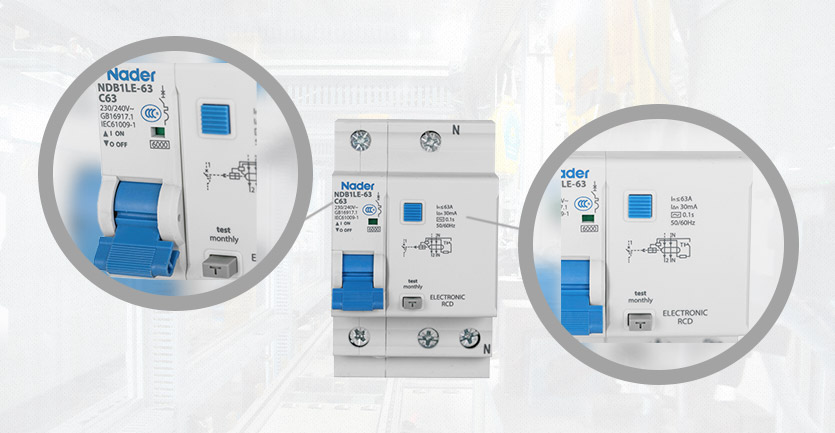
2. Do not install too close to high current busbar and AC contactor.
3. When the action current of residual current circuit breaker is more than 15mA, the equipment enclosure protected by residual current circuit breaker must be grounded reliably.
4. Full consideration should be given to the power supply mode of the power supply circuit, the voltage of the power supply circuit and the grounding mode of the system.
5. Sufficient arc flying distance must be ensured when installing residual current circuit breaker with short circuit protection.
6. Copper conductors shall be used for the control loops connected externally to the combined residual current circuit breakers with a cross-section of not less than 1.5m㎡.
7. After installing the residual current circuit breaker, the original ground protection measures of the low voltage line or equipment can not be removed. At the same time, the neutral wire on the load side of the circuit breaker must not be shared with other loops to avoid misoperation.
8. The neutral wire must be strictly distinguished from the protective ground wire during installation. The neutral wires of the three-pole, four-wire and four-pole residual current circuit breakers shall be connected to the circuit breakers, and the neutral wires passing through the circuit breakers shall no longer be used as protective grounding wires, nor shall they be re-grounded or connected to the electrical equipment enclosures. The protective ground wire must not be connected to the residual current circuit breaker.
9. Residual current circuit breakers shall be protected by separate loops and shall not be electrically connected to other loops. Residual current circuit breakers cannot be used in parallel to protect the same line or electrical equipment.
10. After installation, the test button should be operated to check whether the residual current circuit breaker can operate reliably.
Wiring
1. The wiring shall be carried out according to the power supply and load sign on the residual current circuit breaker, and the two shall not be reversed.
2. The protective line must not pass through zero-sequence current transformer. When using three-phase five-wire system or single-phase three-wire system, the protective line must be connected to the protection trunk at the inlet end of residual current circuit breaker and must not pass through zero-sequence current transformer in the midway.
3. Single-phase lighting circuit, three-phase four-wire distribution line and other lines or equipment using working zero-line must pass through zero-sequence current transformer.
4. In the system where the neutral point of the transformer is directly grounded, once the residual current circuit breaker is installed, the working neutral wire can only be used as the working neutral wire after passing through the zero-sequence current transformer. It cannot be grounded repeatedly, and cannot be connected to working neutral wire of other line.
5. Electrical equipment can only be connected to the load side of the residual current circuit breaker. One end is not allowed to be connected to the load side while the other end is connected to the power side.
6. In the three-phase four-wire system or three-phase five-wire system where single-phase and three-phase loads are mixed, three-phase loads should be balanced as far as possible.
Common faults of Residual Current Circuit Breaker
Trip when put into operation
1. Three-phase power supply line, including neutral wire, does not pass through zero-sequence current transformer in the same direction, so it is sufficient to correct the wiring.
2. The installed residual current circuit breaker is electrically connected to the line of the uninstalled residual current circuit breaker, and it is sufficient to separate the two circuits.
3. Repeated grounding occurs on the neutral wire running through the zero-sequence current transformer, so it should be eliminated.
4.residual current circuit breaker itself is faulty and should be replaced.
Wrong action
1. Caused by overvoltage. If the circuit breaker act when the switching overvoltage occurs in the line, the delayed or impulse voltage non action residual current circuit breaker can be selected, or the resistance capacitance absorption circuit can be installed between the contacts to suppress the over-voltage, or the overvoltage absorption device can be put into the line.
2. electromagnetic interference. If there is magnetic equipment or high-power electrical equipment nearby, the installation position of residual current circuit breaker shall be adjusted to keep away from such electrical components.
3. Affected by circulation. If two transformers operate in parallel, and each has its own grounding wire. Because the impedance of the two transformers cannot be completely equal, circulating current will be generated in the grounding wire, causing the circuit breaker to act. Therefore, one grounding wire can be removed. In addition, the same transformer supplies power to the same load through two parallel circuits. The current in the two circuits can not be exactly the same, there may also be circulating current. Therefore, the two circuits should be operated separately.
4. The insulation resistance of working neutral wire is reduced. When the insulation resistance of the working neutral wire is reduced, if the three-phase load is unbalanced, a relatively large working current will appear on the neutral wire and flow to other branches through ground, so that the leakage current can appear on each residual current circuit breaker and make the circuit breaker malfunction.
5. Improper grounding. If the neutral wire is repeatedly grounded, the residual current circuit breaker will malfunction.
6. Effect of overload or short circuit. If the residual current circuit breaker has short-circuit protection and over-current protection at the same time, when the setting current of the over-current protection release is not appropriate, the wrong action will occur. At this time, the setting current value can be adjusted.
